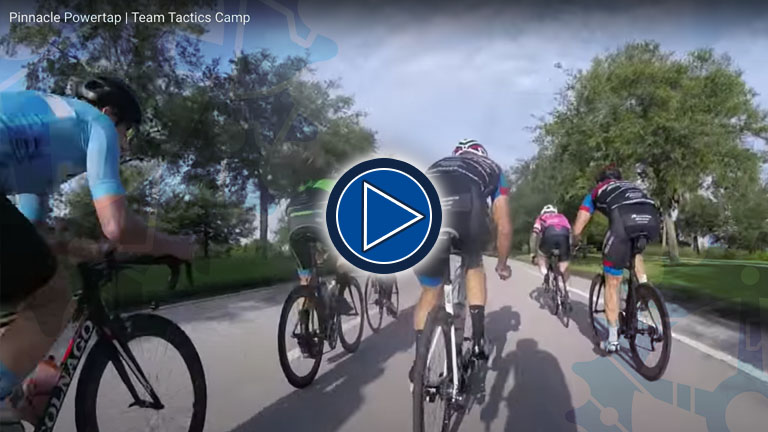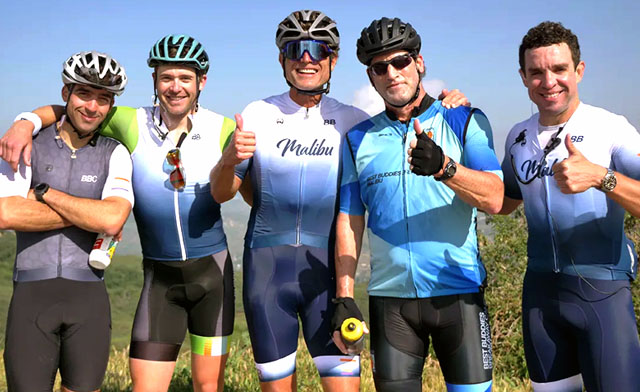 Train to the demands of Your Event (Part 1)
Train to the demands of Your Event (Part 1)
A power meter and the correlating software allow one to cater their training to marque events with surgical like precision. Strava, Garmin Connect, and Training Peaks house all information needed to develop a plan centralized on growing potential limiters as they align with the physiological demands of the events you are targeting. In this two part series we will address the finite points and process specific to preparing you for your targeted events. Lets begin with by looking at a practical example from late April.
- Venue- Category 1/2 Gila Stage Winning file
Gila Stage 2- 74 miles 3:19:13 of racing and 240 TSS (Training Stress Score) with 5,000 feet of vertical gain
Preparation for this stage race was rather straight forward. Our objectives were to increase aerobic efficiency, and hone the riders ability to ride at SST/LT (88-105% of FTP). These attributes, as basic as they sound needed to be maximized. If the rider isnt proficient riding for 3-4 hours in the tempo range and repeating sub threshold/ threshold intervals at race pace his hopes of winning will be short lived.
The targeted stage contained 4 climbs which on average were 20 minutes in length. Repeat ability in this range coupled with his power to weight within the 20 minute range is what made this stage victory a reality.One of the most telling portions of this file came after 2.5 hrs of racing. Within the 55 minute sweet spot effort he was able to throw down a 10 minute LT effort (310 watts/ 4.85 watt:Kg). Below you can view the raw file with the climbs segmented.
The Approach
Three weeks out we used a blended approach utilizing B rate events at altitude in conjunction with longer bouts of sweet spot intervals (20-40 minutes at 88-94% of FTP) and VO2 intervals (106-120% of FTP). This balanced approach was essential for a myriad of reasons. The racing was implemented to keep the rider sharp, the SST intervals helped the rider become acclimated to the efforts this stage would demand, and the VO2 intervals served as a catalyst to help the rider become proficient in an energy range paramount to establishing the break away and ultimately winning.
Finer Points: In our final build phase we had the following
2 very specific workouts that were 5+ hours in length that incorporated precise intervals that would be mimic the demands in stage 2. Below is one of the flagged workouts used to track trajectory leading up to the Gila Stage Race.
Constant contact given the various moving parts. Tracking recovery, motivation, and reviewing growth was generally the topic of conversation. Trajectory and growth markers were tracked by monitoring EF (Efficiency Factor) in conjunction with power to heart rate values for specific intervals. You can learn more about these tracking methods here-https://home.trainingpeaks.com/blog/article/efficiency-factor-and-decoupling
3 weeks of highly structured training that contained 15, 18, and 20 hours of training while carrying a weekly average TSS of 900. Side note: The 20 hour week was the last week in the build and was implemented at that point in time given historical data supporting this athletes benefit of a sharper ramp rate late in the cycle. You can learn more about the performance management chart and ramp rates here- https://home.trainingpeaks.com/blog/article/why-ramp-rate-is-an-important-training-metric
Make the data your own!
Once you have selected your targeted events you need to identify the demands of the course. The demands can be obtained by looking at the file using one of the various online sources that house the files. Zero in on the gross race time, intensity, and particular segments of the file that have the potential to sort the race. In addition, you will want to ascertain how the race was won. Once you have those pieces of data you need to cross reference your power profile against the markers associated with the event you have you eye on. The purpose of cross referencing your file with the demands of the course is to pin point potential areas of focus. Lets take the Florida state Road Race course for a quick example.
- Category 3 and men that fall in the 19-49 age range will be racing 64 miles or 4 laps of the 16 mile course. The most trying portion of the course is Ice Cream Hill which is .9 miles in length with an average gradient of 2% and comes 2.7 miles into the 16 mile lap. You can view this segment of the course here- https://www.strava.com/segments/1153099
- Those that are competing in the above categories should feel confident if they are in fact proficient riding 2-3 hours in the tempo range and can repeat 6-8 efforts that are 2.5- 3 minutes in length while sustaining 115-135% of their FTP.
- Fabricate intervals that mock the manner in which you intend to win the race. Tie these intervals to your quantifiable strengths. As an example- You ride a 3 minute VO2 interval to mimic cresting Ice Cream Hill, recover for 15-20 seconds, and then ride a 7-10 minute interval at LT (95-105% of FTP). This is a great way to create separation for a rider possessing a strong FTP per their body mass.
The resources required to develop a plan are free and only a mouse click away. Look objectively at your training and make tangible goals. Devise a structured plan, archive notes from the workouts, and upload the data! Track trends and keep your eye on the prize! In the sequel to this blog we will identify factors outside of the raw data that are pertinent to returning results. Have questions or need a second set of eyes on your data, call or email me pinnaclepatrick@gmail.com .




